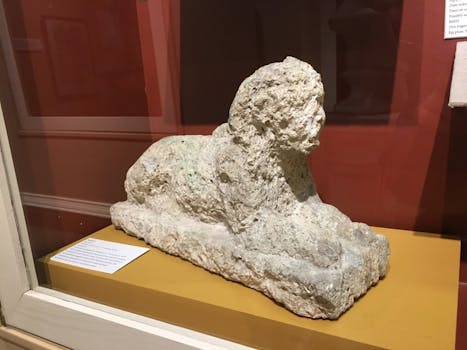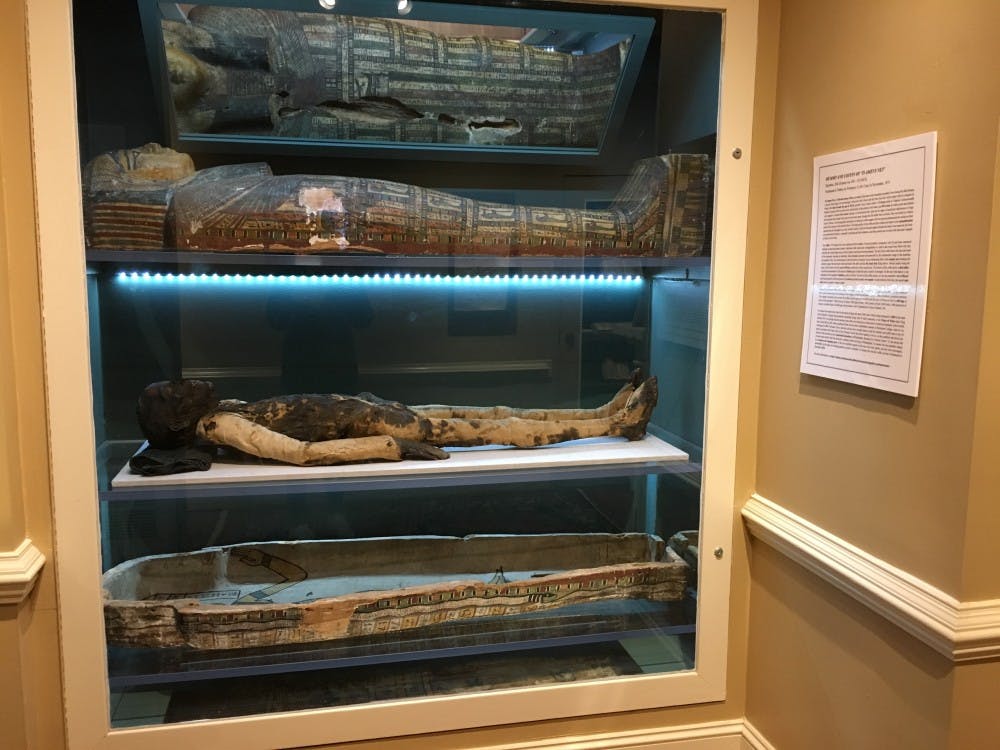Editor's Note: This story was updated to correct Elizabeth Baughan's title. Baughan is not the chair of the classical studies department, as the article originally stated.
North Court is the home of many students, the education department, the Perkinson Recital Hall, the classical studies department -- and also, a mummy.
On the second floor of North Court in the Ancient World Gallery lies Ti-Ameny-Net, an Egyptian mummy. She is one of numerous treasures found in the gallery, tucked away in the classical studies department.
The gallery, founded in 1979 by Stuart Wheeler, a professor of classical studies, serves as a teaching resource, said Elizabeth Baughan, associate professor of classics and archaeology.
Baughan is also the curator of the Ancient World Gallery.
Ti-Ameny-Net was first housed downtown in the Richmond College Museum in 1876, Baughan said. In 1914, when the campus moved to its current location, the items from the museum were moved across various departments. Baughan said at one point the mummy had been in the Biology Museum in Maryland Hall.

Ti-Ameny-Net spent time in Jeter Hall. Photo courtesy of Elizabeth Baughan.
In 2013, many artifacts, including Ti-Ameny-Net, were moved to the Lora Robins Gallery for an exhibit, Baughan said. During that time, the Ancient World Gallery, specifically the display case for the mummy and coffin, underwent construction. Mirrors were added to the display area, the method of holding up the coffin was made more suitable for conservation, the case was made airtight and Art-Sorb was installed for humidity control, Baughan said.
Back in 1979, the gallery was in a closet and was painted black, Dean Simpson, professor of classical studies, said. Wheeler worked with University Facilities to improve and expand the space, Simpson said.
“The gallery has changed so much since I arrived here,” said Simpson, who began working at the university in 1983.
In 2010, a radiologist at Virginia Commonwealth University did CT scans on Ti-Ameny-Net, Baughan said. The study concluded that Ti-Ameny-Net probably died of heart disease, she said.
Enjoy what you're reading?
Signup for our newsletter
A reconstruction of Ti-Ameny-Net’s face was also completed, Simpson said.
“It’s impossible not to be aware that she was as alive as you and I are 2,600 years ago,” Simpson said. “We are kind of fellow travelers.”
Despite the immediate draw and popularity of the mummy, both Baughan and Simpson’s favorite artifacts in the gallery are not the mummy, they said.
A small jug that has a visible fingerprint on it is Baughan’s favorite, because it brings you so close to the maker, she said.
The Egyptian Sphinx is Simpson’s favorite artifact because it shows the wear of time, he said.

An ancient Sphinx located in the Ancient World Gallery.
Gertrude Howland, who attended Westhampton College in the early 1900s, was a large benefactor of the gallery and funded the Gertrude Howland Summer Grant, Baughan said.
According to the classics department website, the summer grant can be used for non-credit experiential learning programs that explore the cultures represented in the gallery: Egyptian, Roman and Aegean. Recipients of the award must connect what they learned with the artifacts in the gallery, Baughan said.
An eclectic group of people visits the gallery, Shelby DeWalle, administrative coordinator of the classics department, said. Members of the Osher Lifelong Learning Institute and a local nanny with the children she watches visit the gallery often, DeWalle said.
The classics department is not looking to expand the gallery or to acquire artifacts at the moment because of the ethical concerns surrounding acquisitions from looting and tomb robbing, Baughan said.
Contact senior news writer Victoria Davis at victoria.davis@richmond.edu.
Support independent student media
You can make a tax-deductible donation by clicking the button below, which takes you to our secure PayPal account. The page is set up to receive contributions in whatever amount you designate. We look forward to using the money we raise to further our mission of providing honest and accurate information to students, faculty, staff, alumni and others in the general public.
Donate Now



